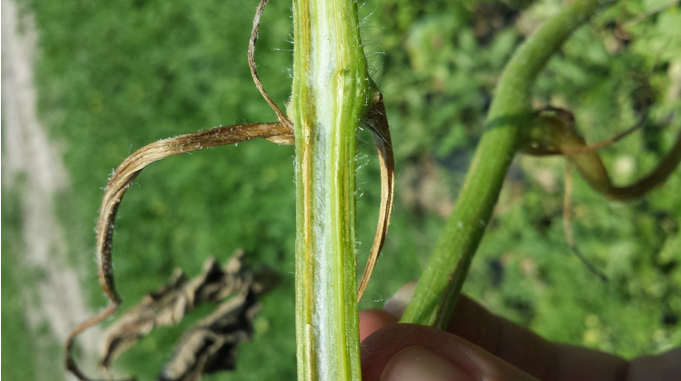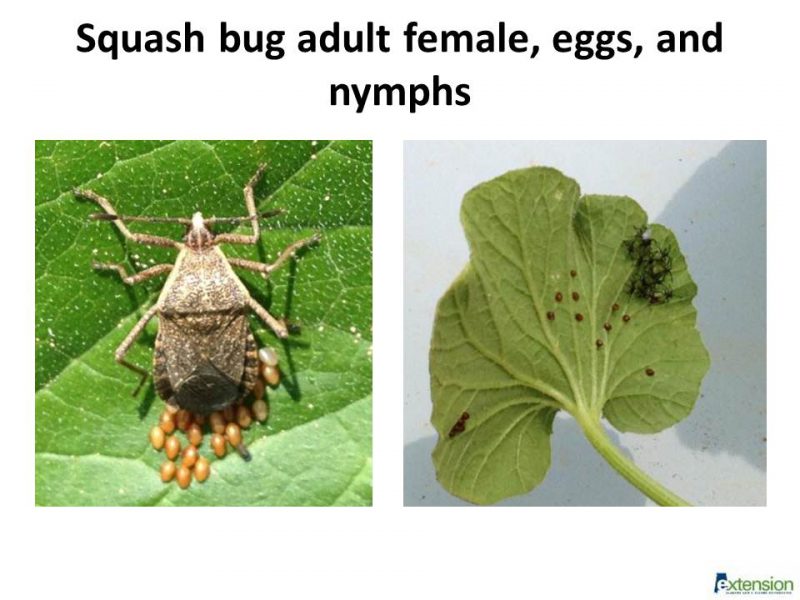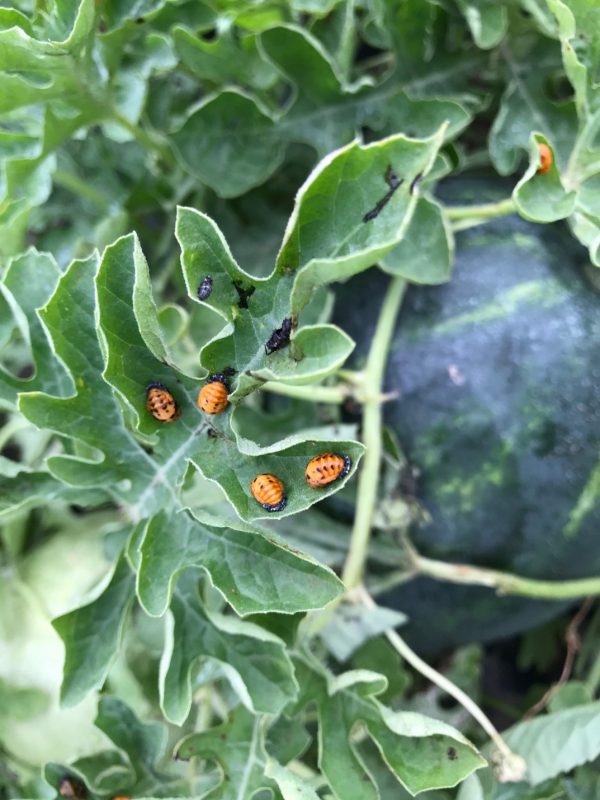Bob Hochmuth with input from Suwannee Valley Extension Agents: Mark Warren (Levy), Tyler Pittman (Gilchrist), Tatiana Sanchez (Alachua), Luke Harlow (Union), Jay Capasso (Columbia), Dan Fenneman (Madison), Keith Wynn (Hamilton), Danielle Sprague (Jefferson), Emily Beach (Lafayette), Amanda Phillips (Suwannee), Kevin Athearn (RSA-Agri- business), and Sudeep Sidhu (RSA- Water Resources).
Disease Updates
Bacterial angular leaf spot (Pseudomonas) (See pages 55 and 56 in your IFAS Watermelon Field Guide): We continue to see new cases of bacterial disease, Pseudomonas angular leaf spot, in some fields. At the end of this last week, we saw isolated fields that had moderately uniform infection across large areas in the field. We are also getting reports of bacterial leaf spots on other crops, including snap beans, in the region (thanks to scouts for reporting this to us). The disease starts as small brown water-soaked lesions and as it advances, the margins of the leaves will be affected as well. The cool and wet weather conditions that we had recently, and will continue this week, are ideal for disease development so avoid manipulating plants in the early hours or while the plants are wet to minimize the spread. Due to the limited spread of this disease currently, we are not recommending widespread copper sprays unless you have confirmation for the disease. However, we do expect to see more confirmations this week.
Fusarium wilt (See pages 32-33 in your IFAS Watermelon Field Guide): We have begun seeing Fusarium wilt symptoms in fields throughout the region this past week. Early symptoms of Fusarium start with moderate wilting during the hottest hours of the day, but the plants seem to recover as it cools off. Eventually, the plants won’t recover. Sometimes, we observe only one or a couple of the runners wilting while the rest of the plant seems healthy. It is possible that the affected runners die while the rest of the plant grows out of the disease as the season progresses and soil temps increase but generally, infected plants will collapse completely right after the fruit set as the transpiration demand on the plant is higher. Keep in mind that with the high winds we had recently, we have observed many plants “wilted” because of the physical damage suffered to stems, and to runners while turning (circular whipping of plants) on the bed which is unrelated to Fusarium.
–
Gummy stem blight (See pages 34-35 in your IFAS Watermelon Field Guide): We now have several confirmations of gummy stem blight, all associated with stem lesions, not leaf symptoms yet. A lot of these plants also have significant wind and sand abrasion as we can all imagine. The winds were severe last week and don’t seem to be letting up. In cases where these stem lesions also have gummy stem blight, initiating a spray of Inspire Super has been recommended. Look closely for open lesions on the stems that are more moist and not typical of wind burn alone. Submit samples to your Extension Agent if diagnosis is needed. (Tatiana Sanchez and Bob Hochmuth)
–
Insect update
Squash bugs (See pages 100-101 in your IFAS Watermelon Field Guide): Last week squash bugs were observed for the first time this season in several counties throughout the region. Most were still individual adults as opposed to mating pairs which tells us that the bugs are just now migrating from wooded areas outside the field perimeters. We encourage everyone to scout and detect them early. It is better to spray the borders earlier as they migrate in as opposed to having to spray the entire field potentially killing many beneficial insects, as pyrethroids used on squash bugs are also hard on pollinators.
–
Beneficial lady beetles (See pages 94-95 in your IFAS Watermelon Field Guide): Many fields are filled with lady beetles, mostly larvae and pupae on the watermelons (see photo below). These fields are ones with rye or oats windbreaks. These small grain windbreaks have a grain aphid species that does not attack watermelon. The lady beetles have been feasting on the aphids in the small grains and now have moved to the watermelons to pupate. This is all a very good thing! We do not want to spray broad spectrum insecticides in these fields unless absolutely necessary. Let the lady beetles go to work for you. Their next meal will likely be filled with thrips. (Tatiana Sanchez and Bob Hochmuth)
- 2024 Watermelon Season Wrap Up - June 21, 2024
- Weekly Watermelon Update – June 3 - June 7, 2024
- Weekly Watermelon Update #10 – May 20 - May 24, 2024




